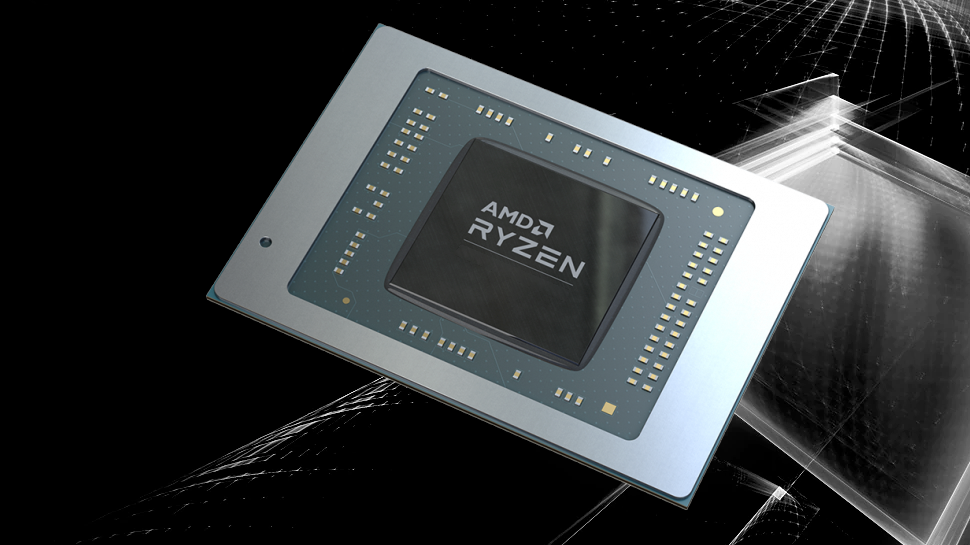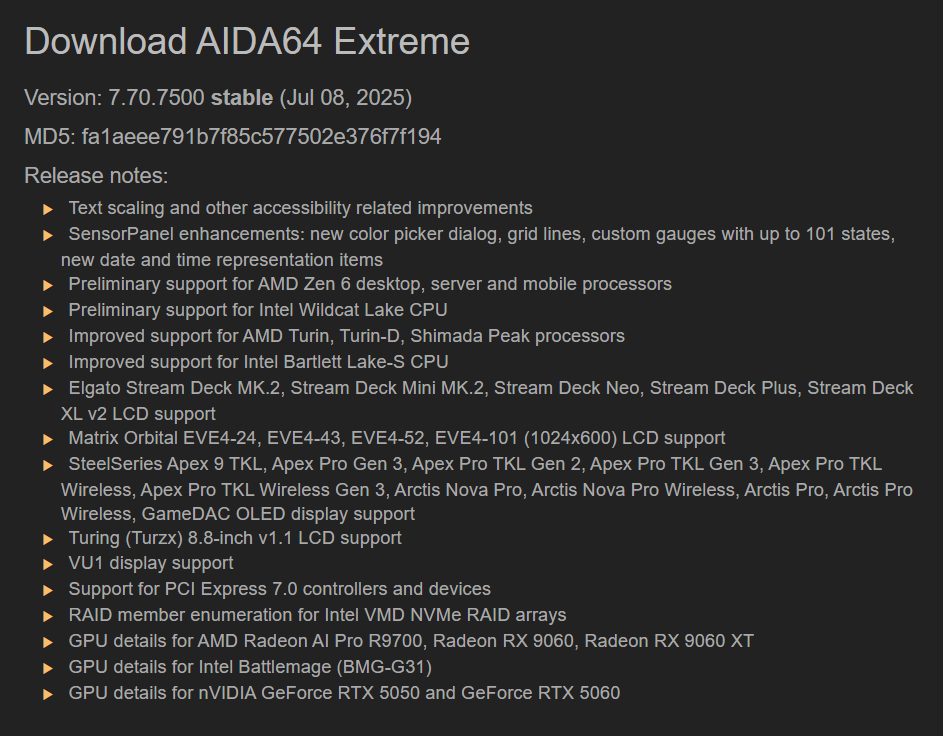Next-gen Intel and AMD CPUs get AIDA64 support — AMD Zen 6 and Intel Wildcat Lake referenced in latest version

Codenames of two upcoming CPU architectures have been implemented into AIDA64's latest version. Version 7.70.7500 implements preliminary support for AMD's Zen 6 and Intel's Wildcat Lake architectures.
Zen 6 is AMD's successor to Zen 5. The new architecture is rumored to finally improve Ryzen's CCD core count from eight cores to 12 cores for the regular cores (not the "c" cores). Assuming this happens, it'll represent the first core count increase of AMD's Ryzen CCD (Core Complex Die) ever for its traditional/regular cores. AMD has been using eight-core CCDs since the introduction of Zen 1 in 2017.

AMD's next-gen architecture is also rumored to feature the return of 3D-VCache technology (to no one's surprise). Apparently, the cache capacity of the 3D chiplet will remain the same as outgoing iterations, giving Zen 6 3D-VCache chips 96MB of L3 cache to work with.
Zen 6 is also rumored to be changing on the laptop side; AMD is allegedly transitioning to a chiplet-based approach entirely for Zen 6, and moving away from monolithic designs. Medusa Point, AMD's codename for one of its laptop APUs, is expected to feature a 12-core compute die and a 200mm^2 I/O die sporting an integrated RDNA GPU.
Server versions of Zen 6 will officially feature core counts of up to 256 cores, representing a 33% increase in core count vs the current generation AMD EPYC Turin-based Zen 5c processors. Unfortunately, little is known about Zen 6's architectural changes.
Wildcat Lake is the codename for Intel's alleged successor to Alder Lake-N, which was the codename for Intel's entry-level chips comprised entirely of E-cores. Wildcat Lake is rumored to come with Cougar Cove P-cores and Darmount E-cores and feature a combination of P cores and LPE cores. If this is the case, Wildcat Lake will essentially be a hybrid version of Panther Lake and Lunar Lake, featuring the same design philosophy as Lunar Lake (with LPE cores housed in the SoC tile) and featuring the same P-cores and E-cores as Panther Lake.
These AIDA64 changes confirm that both architectures are in active development. Version 7.70.7500 also boasts a plethora of other changes, including improved support for AMD's outgoing Turin, Turin-D, and Shimada Peak processors and Intel's Barlett Lake-S CPUs. Plus, various improvements and additional support for peripherals, handhelds, GPUs, and more.
Get Tom's Hardware's best news and in-depth reviews, straight to your inbox.
Follow Tom's Hardware on Google News to get our up-to-date news, analysis, and reviews in your feeds. Make sure to click the Follow button.

Aaron Klotz is a contributing writer for Tom’s Hardware, covering news related to computer hardware such as CPUs, and graphics cards.
-
dalek1234 "Assuming this happens,": MILD confirmed it will happen.Reply
BTW, Zen 6 is build to have more than 96MB of 3d cache. 240 MB to be exact. Same leak source as above. What isn't know yet is how much of that extra cache, if any, will AMD put on, and on which CPU's (probably server ones, but one can dream that consumers CPUs will get some of that extra cache too).